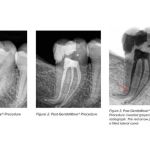How to Prevent Tooth Loss Due to Gum Disease
- Understanding Gum Disease and Its Impact on Tooth Loss
- Early Signs of Gum Disease to Watch For
- How to Prevent Gum Disease and Tooth Loss
- Treatment Options for Gum Disease
1. Understanding Gum Disease and Its Impact on Tooth Loss
Gum disease, also known as periodontal disease, is one of the leading causes of tooth loss worldwide. It starts as gingivitis, a mild form of gum inflammation, but can progress to periodontitis if left untreated. Periodontitis damages the tissues that support your teeth, potentially leading to tooth loss.
While gum disease is common, it can often be prevented with proper oral hygiene and regular dental checkups. However, once it progresses, the damage can be irreversible. The bacteria in your mouth can attack the gums, leading to swelling, bleeding, and even the loss of bone structure that holds your teeth in place.
The most alarming part about gum disease is that it may not show symptoms until it’s too late, making it even more important to practice good oral hygiene and seek professional treatment early.
2. Early Signs of Gum Disease to Watch For
Being aware of the early warning signs of gum disease can help you take action before the condition worsens. Here are some common signs to look out for:
- Gum Inflammation: Swollen, red, or tender gums are a sign that your gums are irritated and could be infected.
- Bleeding Gums: If your gums bleed when brushing or flossing, it could indicate the early stages of gum disease.
- Persistent Bad Breath: Foul-smelling breath that doesn't go away could be caused by bacteria buildup in your mouth.
- Loose Teeth: Gum disease can weaken the bone structure around your teeth, leading to mobility or looseness.
- Receding Gums: Gums that pull away from the teeth, making them appear longer or more exposed, are a sign of advanced gum disease.
If you notice any of these symptoms, it's important to visit a dentist promptly for evaluation and treatment. Early intervention is key to preventing tooth loss due to gum disease.
3. How to Prevent Gum Disease and Tooth Loss
The best way to prevent tooth loss due to gum disease is to maintain excellent oral hygiene habits. Below are several key steps to keep your gums and teeth healthy:
- Brush Twice a Day: Use a fluoride toothpaste and brush for at least two minutes to remove plaque from the surface of your teeth and gums.
- Floss Daily: Flossing helps remove plaque and food particles from between your teeth and under the gum line where your toothbrush can’t reach.
- Use Antibacterial Mouthwash: Rinsing with a mouthwash containing antibacterial properties can help reduce plaque buildup and fight bacteria that contribute to gum disease.
- Regular Dental Checkups: Visit your dentist regularly for cleanings and checkups. Professional cleanings remove plaque and tartar buildup that can lead to gum disease.
- Quit Smoking: Smoking is a major risk factor for gum disease and can significantly impair your body's ability to fight infection.
By implementing these daily practices, you can significantly reduce the risk of gum disease and prevent the potential loss of your teeth. Taking these preventive steps will not only protect your smile but also improve your overall health.
4. Treatment Options for Gum Disease
If gum disease has progressed beyond the early stages, treatment will be necessary to avoid tooth loss. Your dentist may recommend the following treatment options:
- Scaling and Root Planing: This deep cleaning procedure removes plaque and tartar from below the gum line and smooths the tooth roots to help the gums reattach.
- Antibiotics: In some cases, antibiotics may be prescribed to reduce infection and promote healing of the gums.
- Surgical Procedures: For more advanced gum disease, surgical treatments such as flap surgery or bone grafts may be necessary to repair damage caused by the disease.
It’s essential to follow your dentist's recommendations and complete the full course of treatment to ensure your gums heal properly and to prevent further damage. Prompt action can significantly improve your chances of saving your teeth and maintaining a healthy smile.
If you're concerned about gum disease and its potential impact on your oral health, taking action now can help you preserve your smile for years to come. For more tips on preventing tooth loss and improving your oral hygiene routine, visit Dentistry Toothtruth for expert advice and quality dental products designed to protect your teeth and gums.







 All Smiles By Design4.0 (549 review)
All Smiles By Design4.0 (549 review) The Tooth Pillow Dentistry0.0 (0 review)
The Tooth Pillow Dentistry0.0 (0 review) Bauman Endodontics Richard Bauman DMD4.0 (197 review)
Bauman Endodontics Richard Bauman DMD4.0 (197 review) Dental Associates of Delaware-Hockessin4.0 (247 review)
Dental Associates of Delaware-Hockessin4.0 (247 review) Saluté Dental - Woodbury5.0 (1513 review)
Saluté Dental - Woodbury5.0 (1513 review) Affordable Dentures & Implants4.0 (502 review)
Affordable Dentures & Implants4.0 (502 review) The Importance of Oral Health Education During Pregnancy for a Healthy Pregnancy
The Importance of Oral Health Education During Pregnancy for a Healthy Pregnancy Best Tips for Brushing Your Teeth Properly for Healthy Gums: Essential Techniques for Oral Health
Best Tips for Brushing Your Teeth Properly for Healthy Gums: Essential Techniques for Oral Health Why Skipping Dental Checkups Can Lead to Bigger Oral Health Problems
Why Skipping Dental Checkups Can Lead to Bigger Oral Health Problems Advantages of Porcelain Dental Restorations
Advantages of Porcelain Dental Restorations How Can Diabetes Cause Tooth and Gum Problems? Preventing and Managing Oral Health Issues
How Can Diabetes Cause Tooth and Gum Problems? Preventing and Managing Oral Health Issues Healthy Habits for Promoting Good Oral Health and Hygiene: Tips for a Healthy Smile
Healthy Habits for Promoting Good Oral Health and Hygiene: Tips for a Healthy Smile